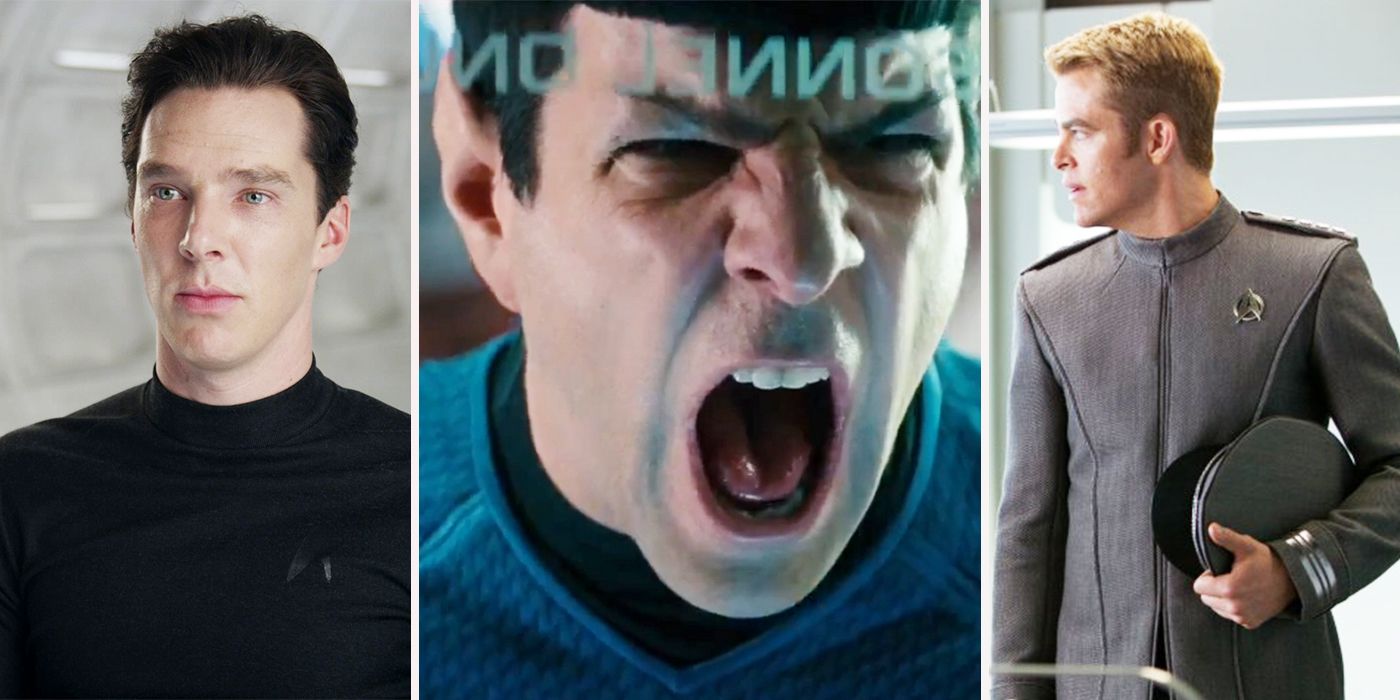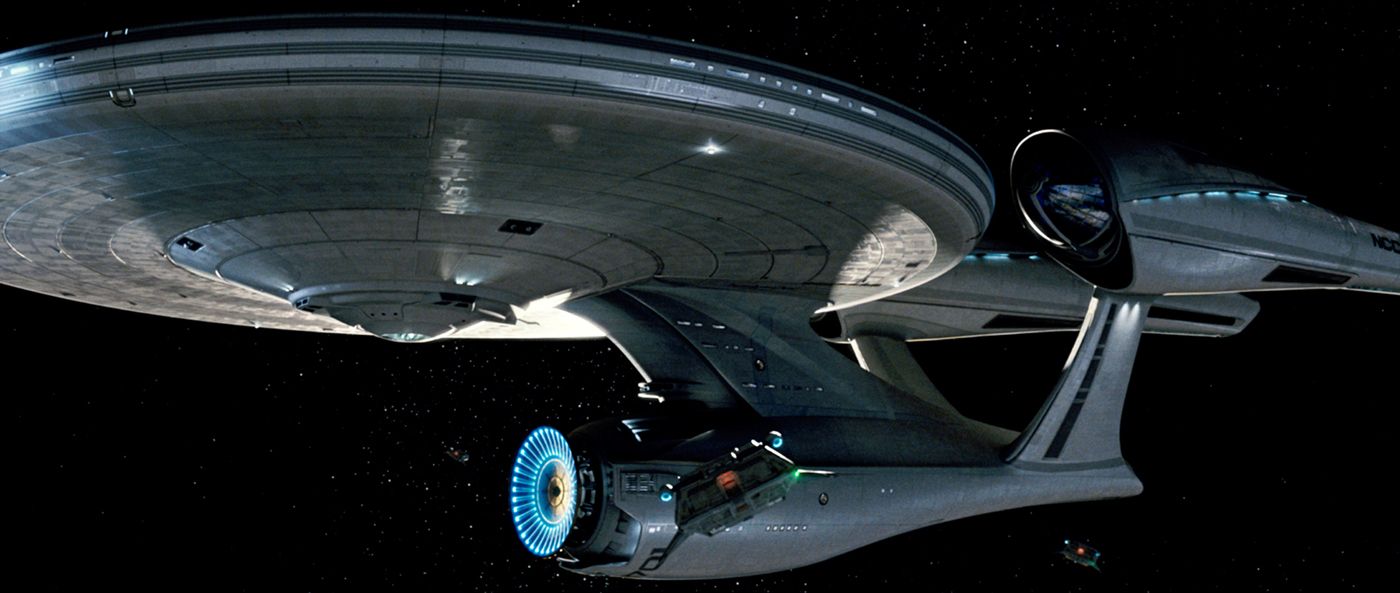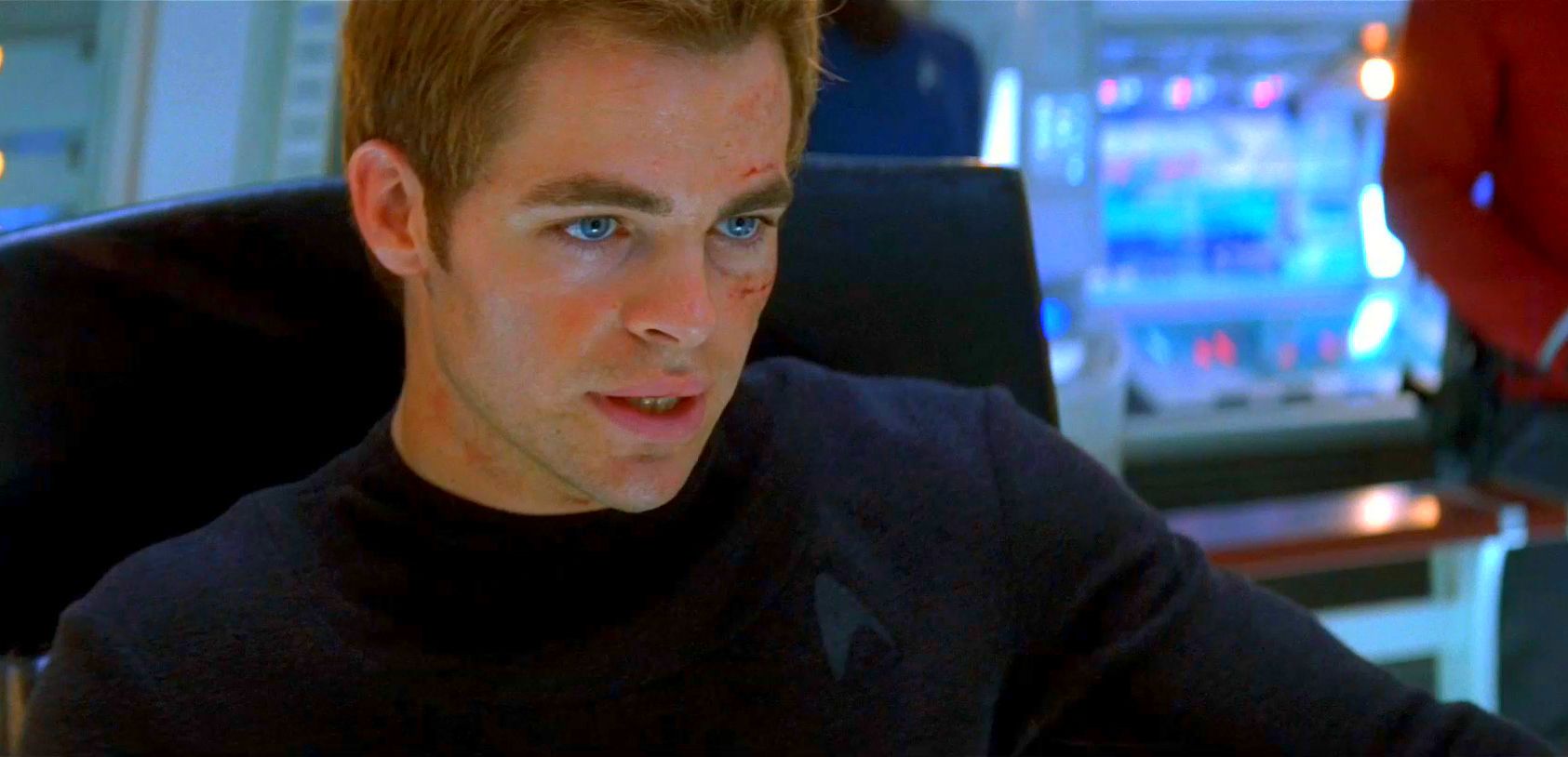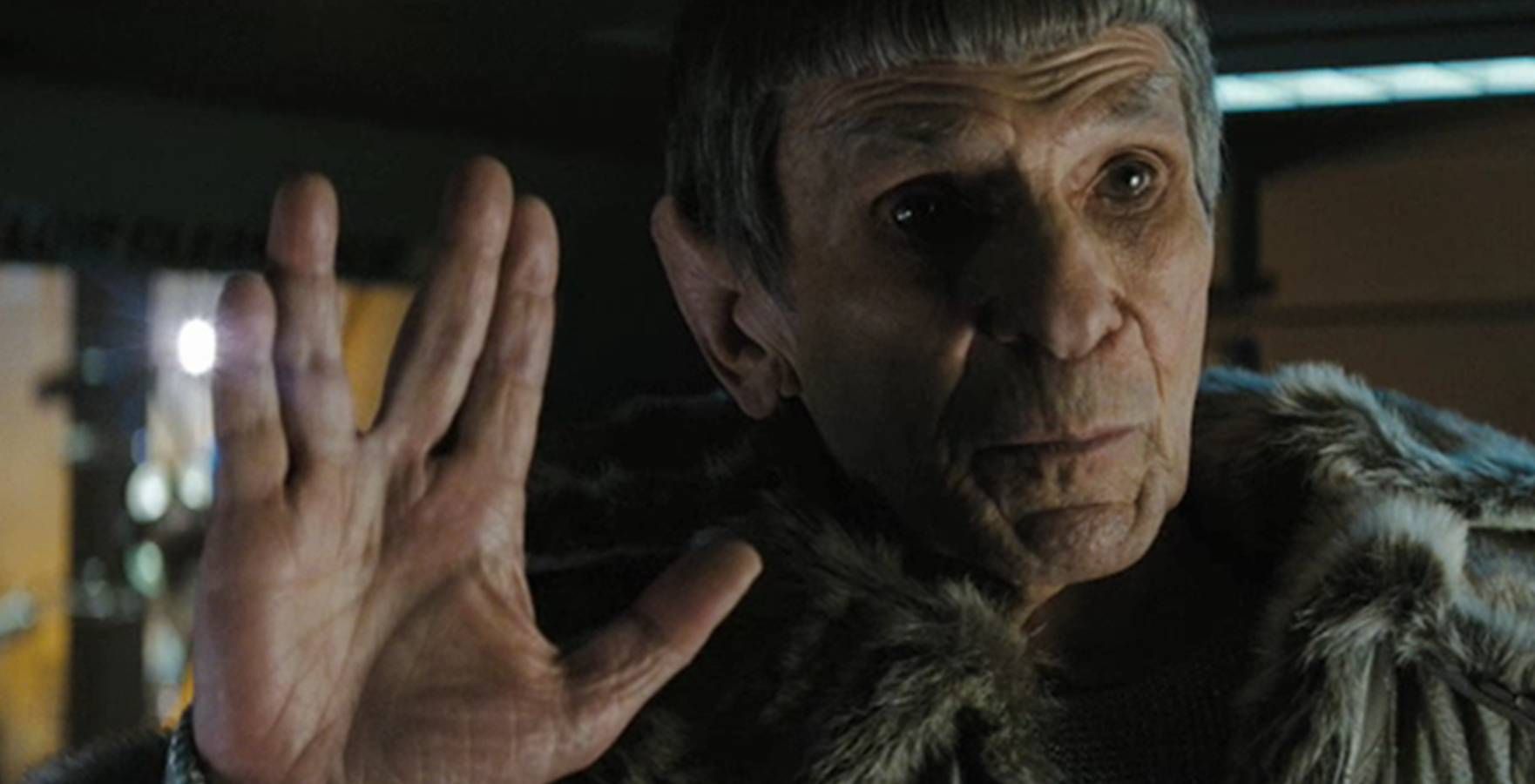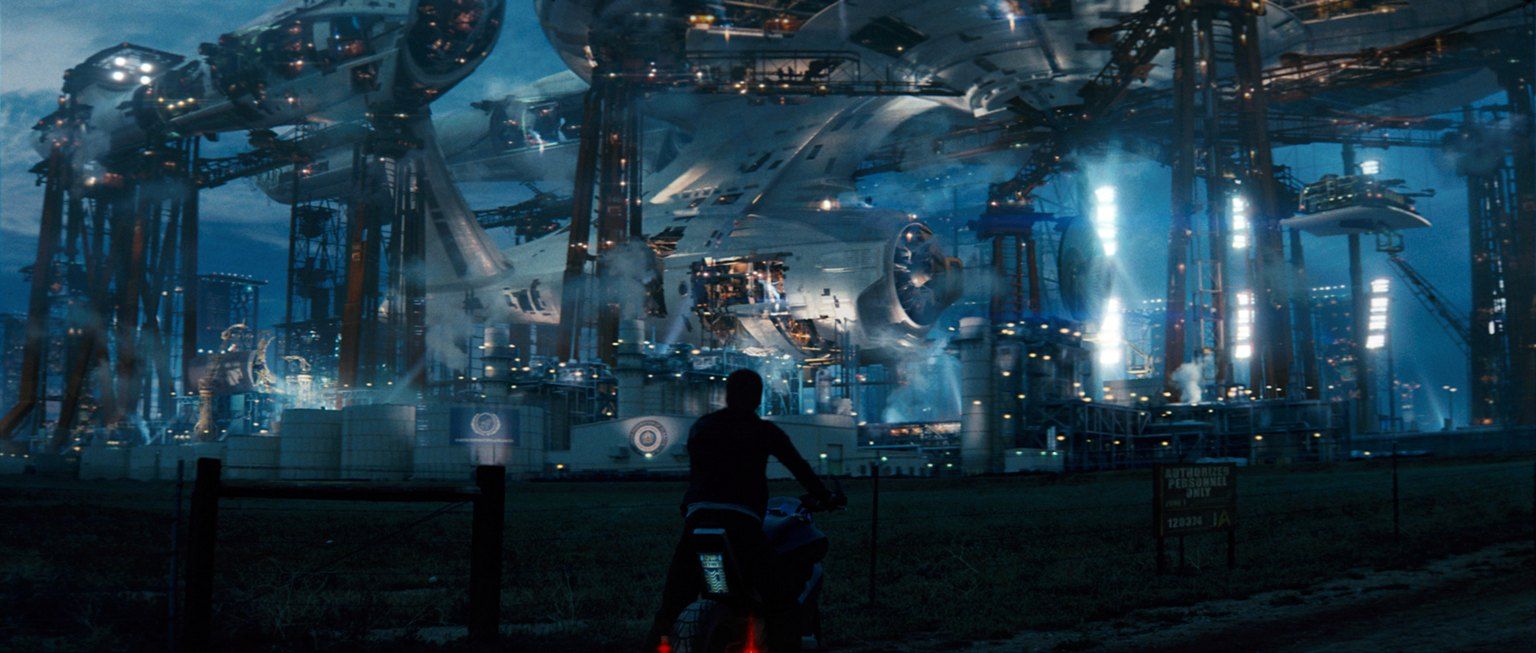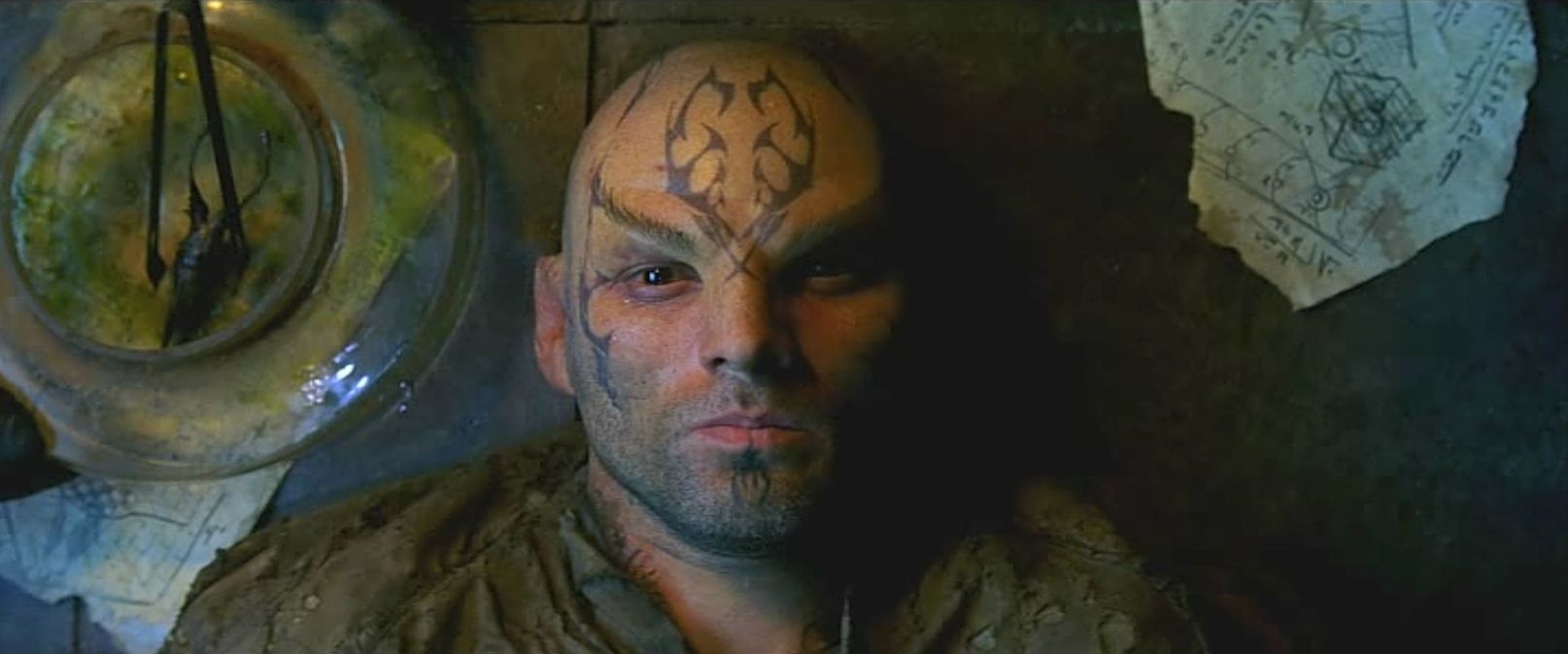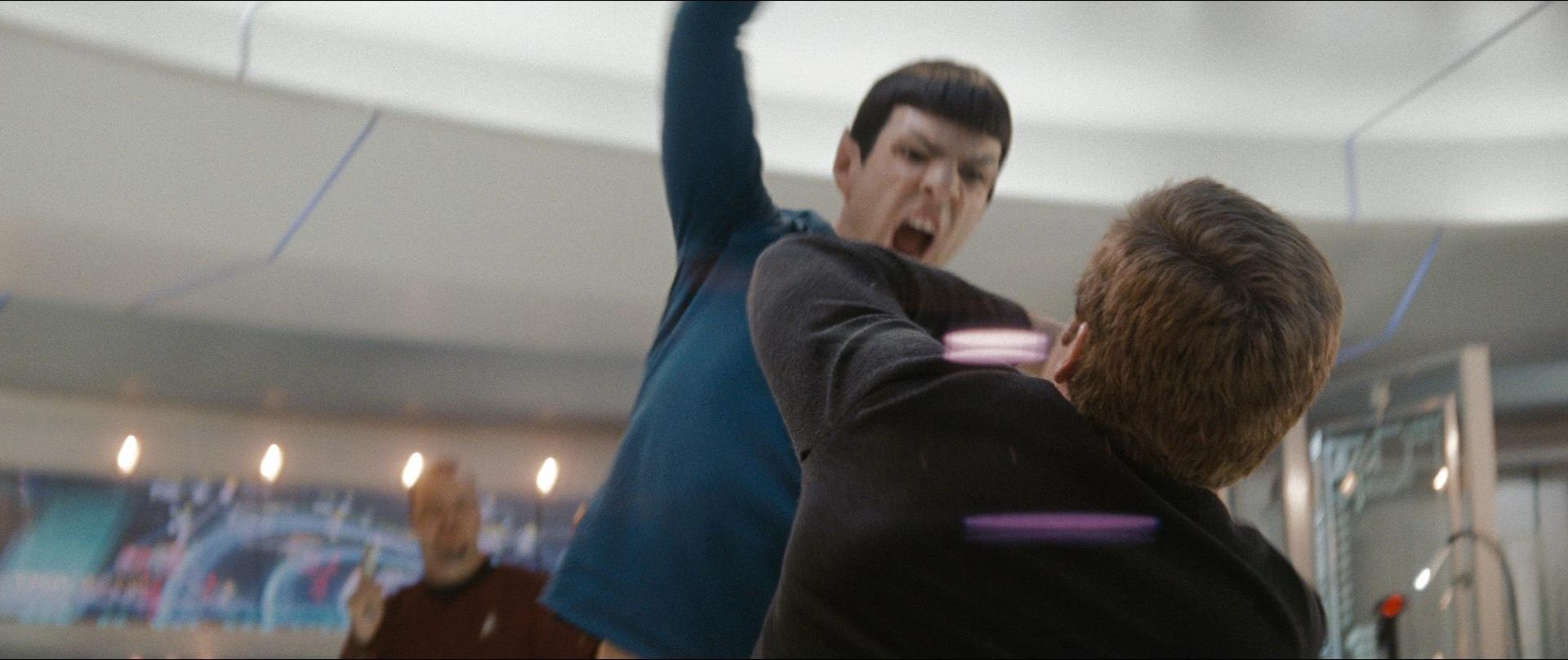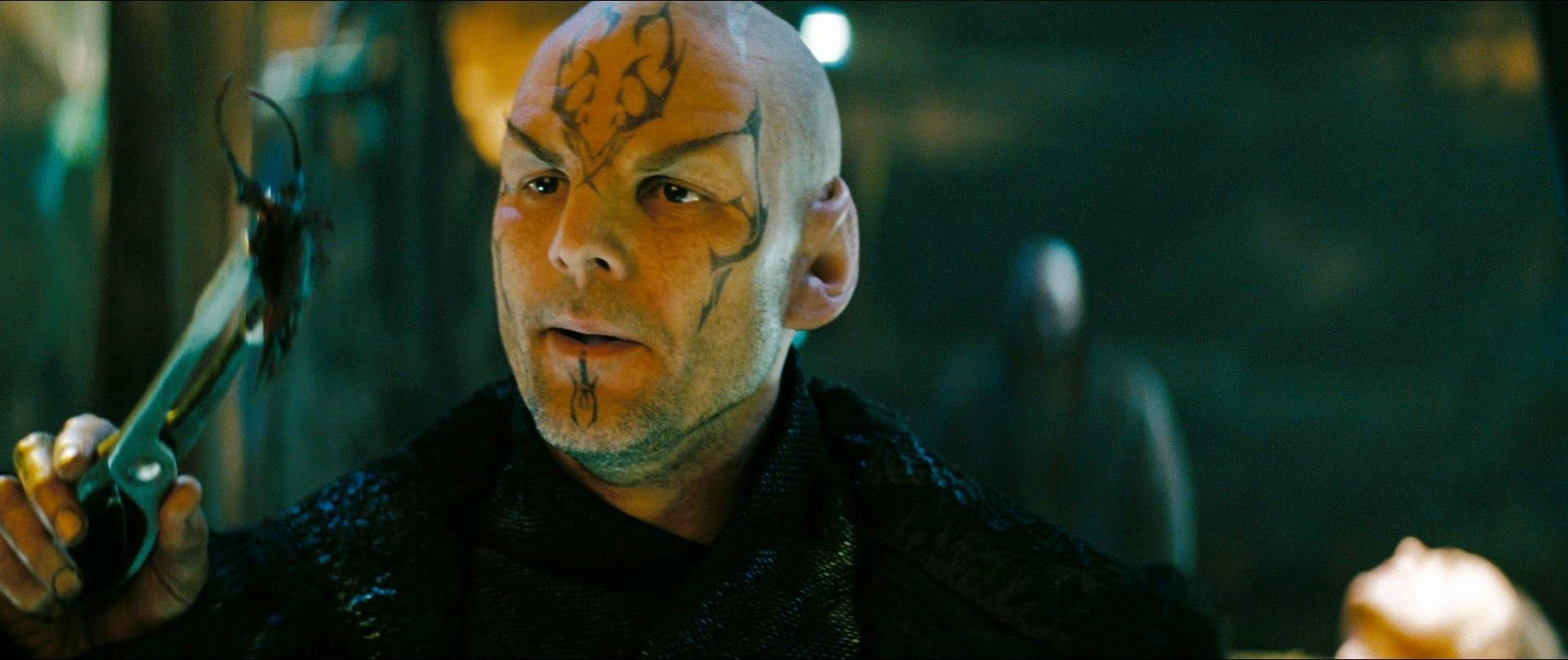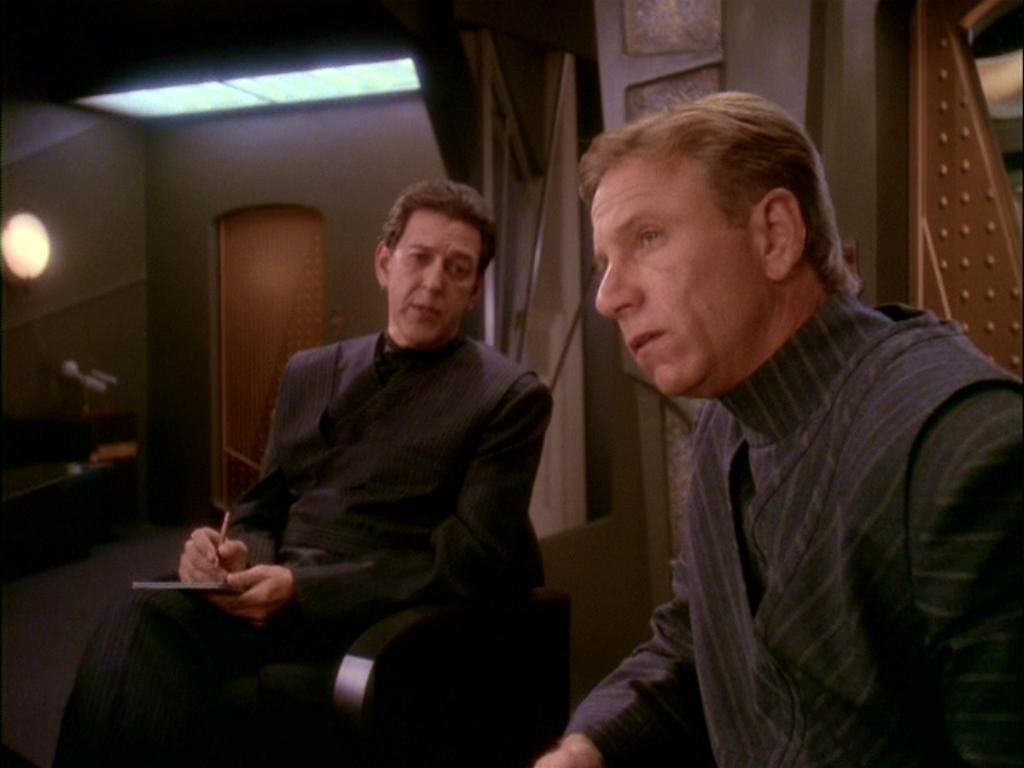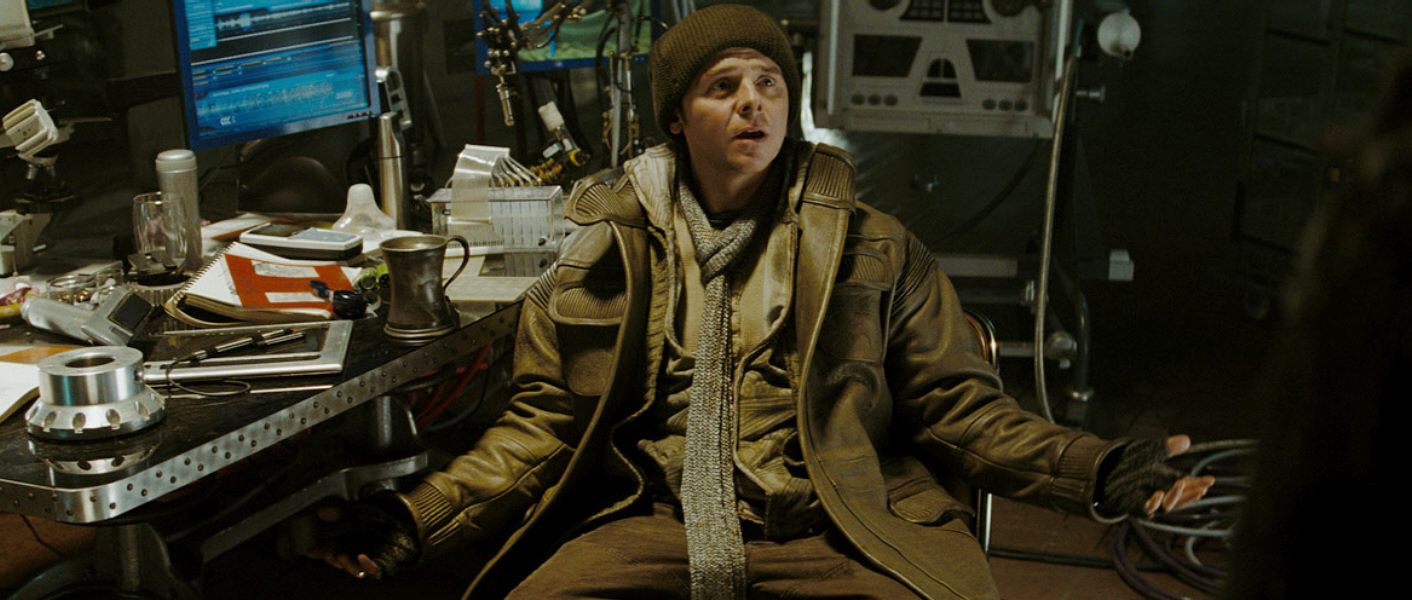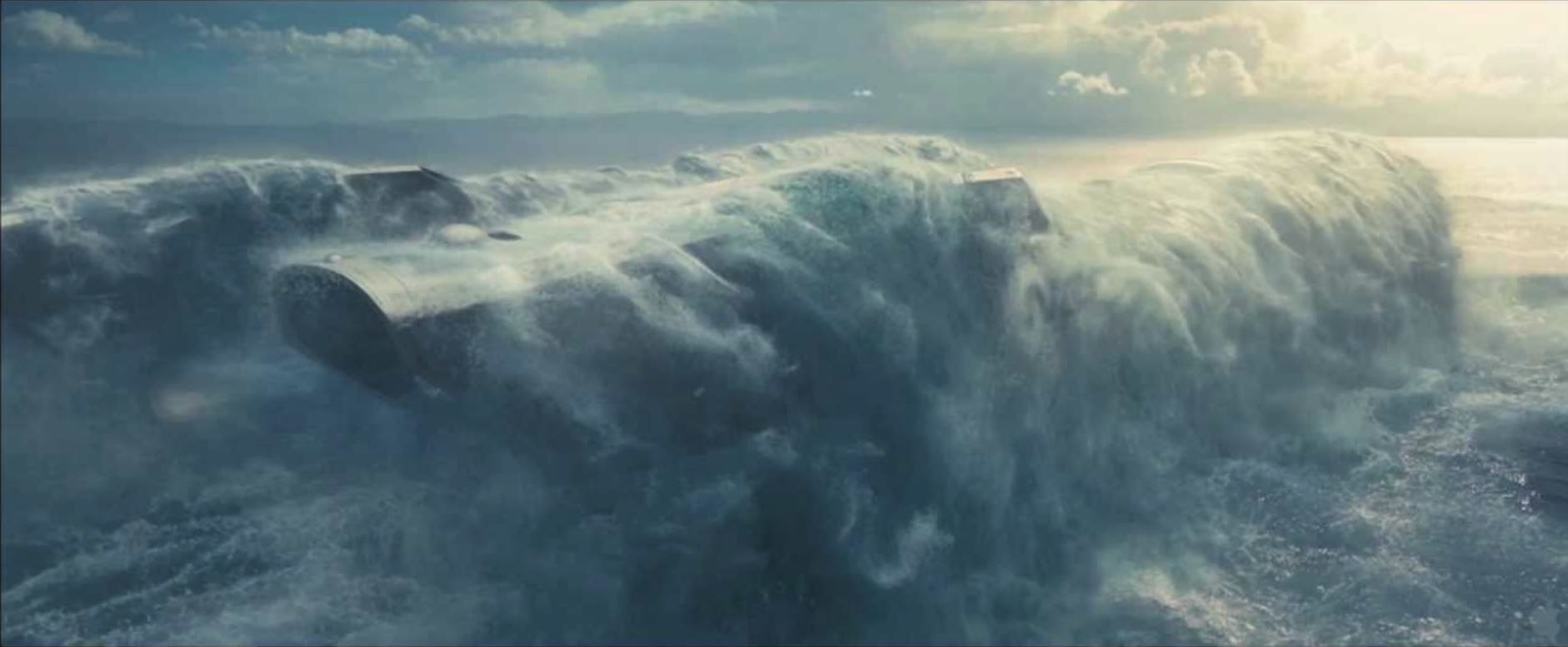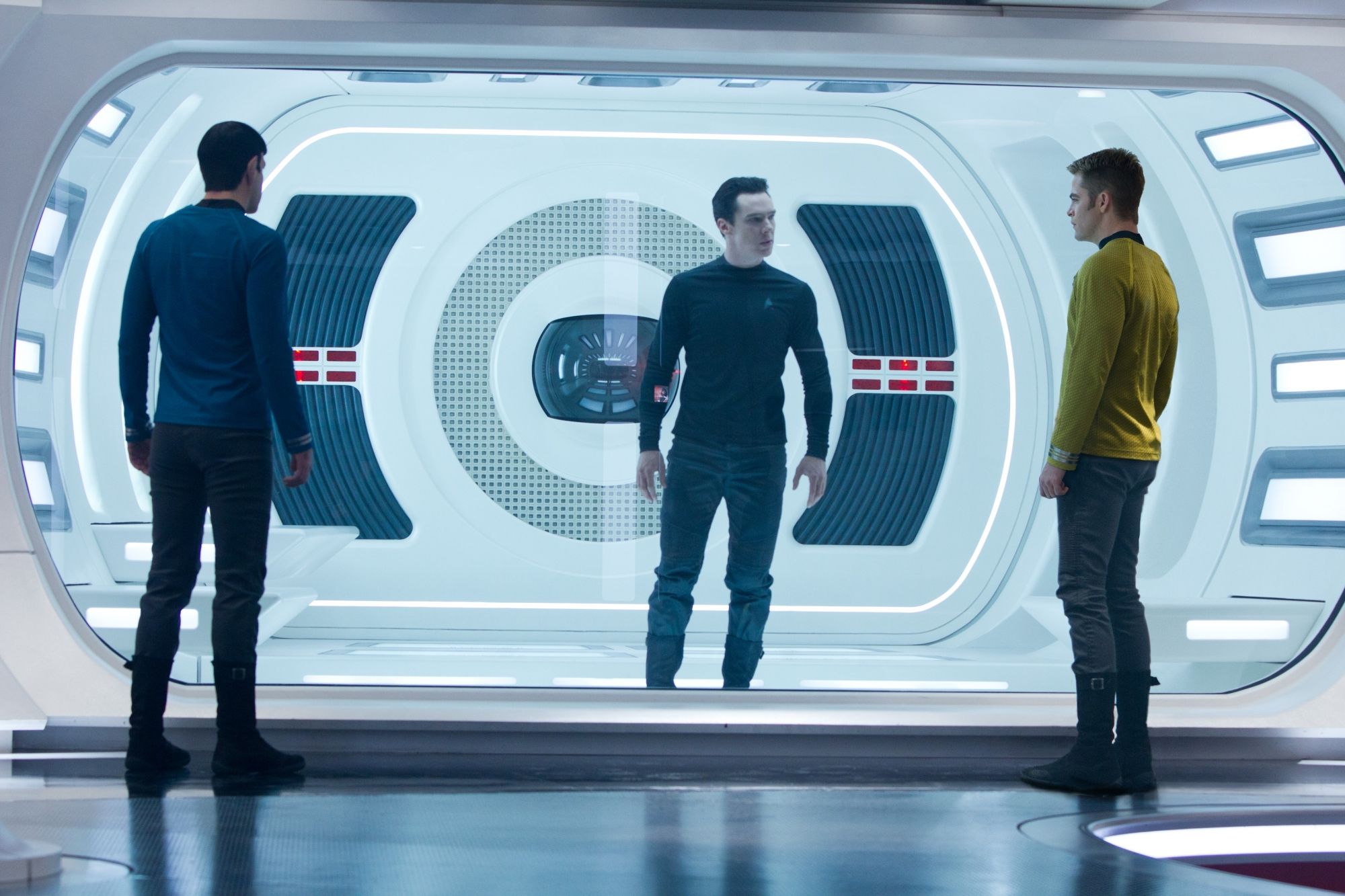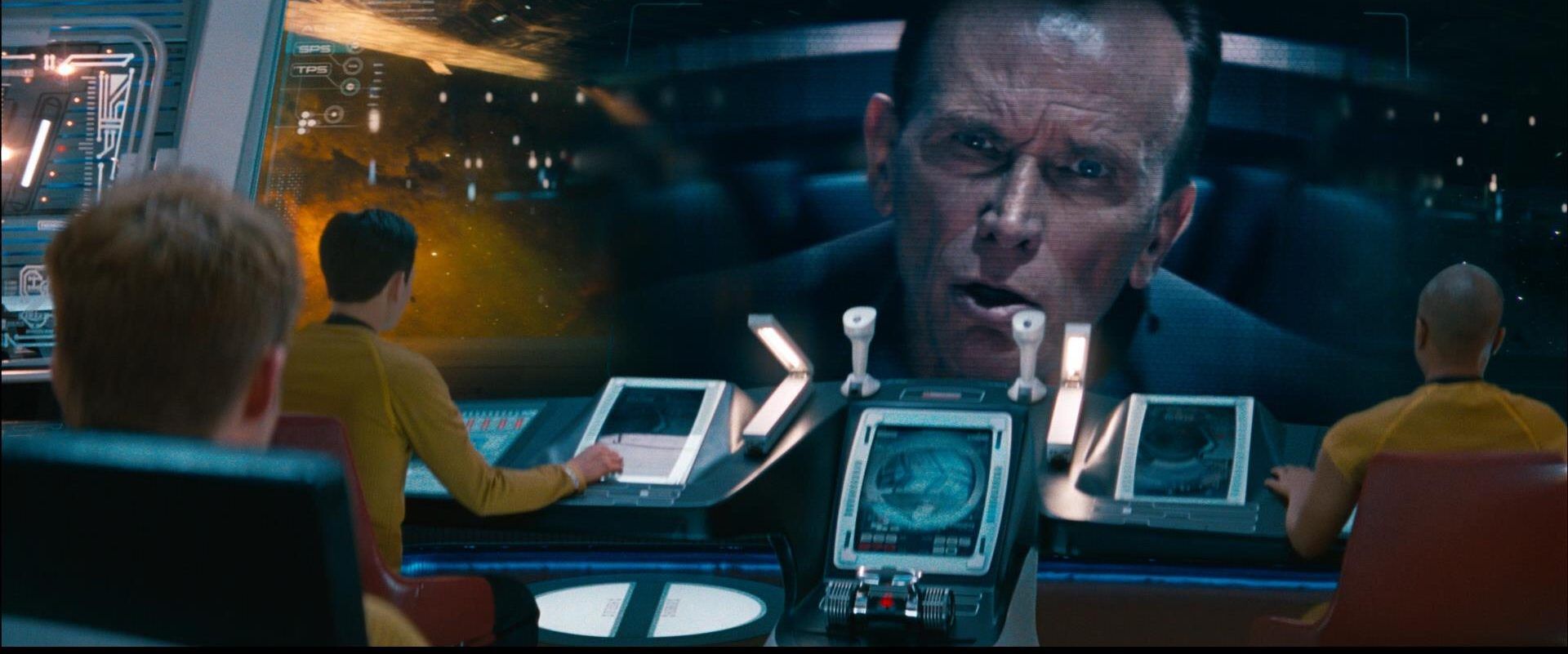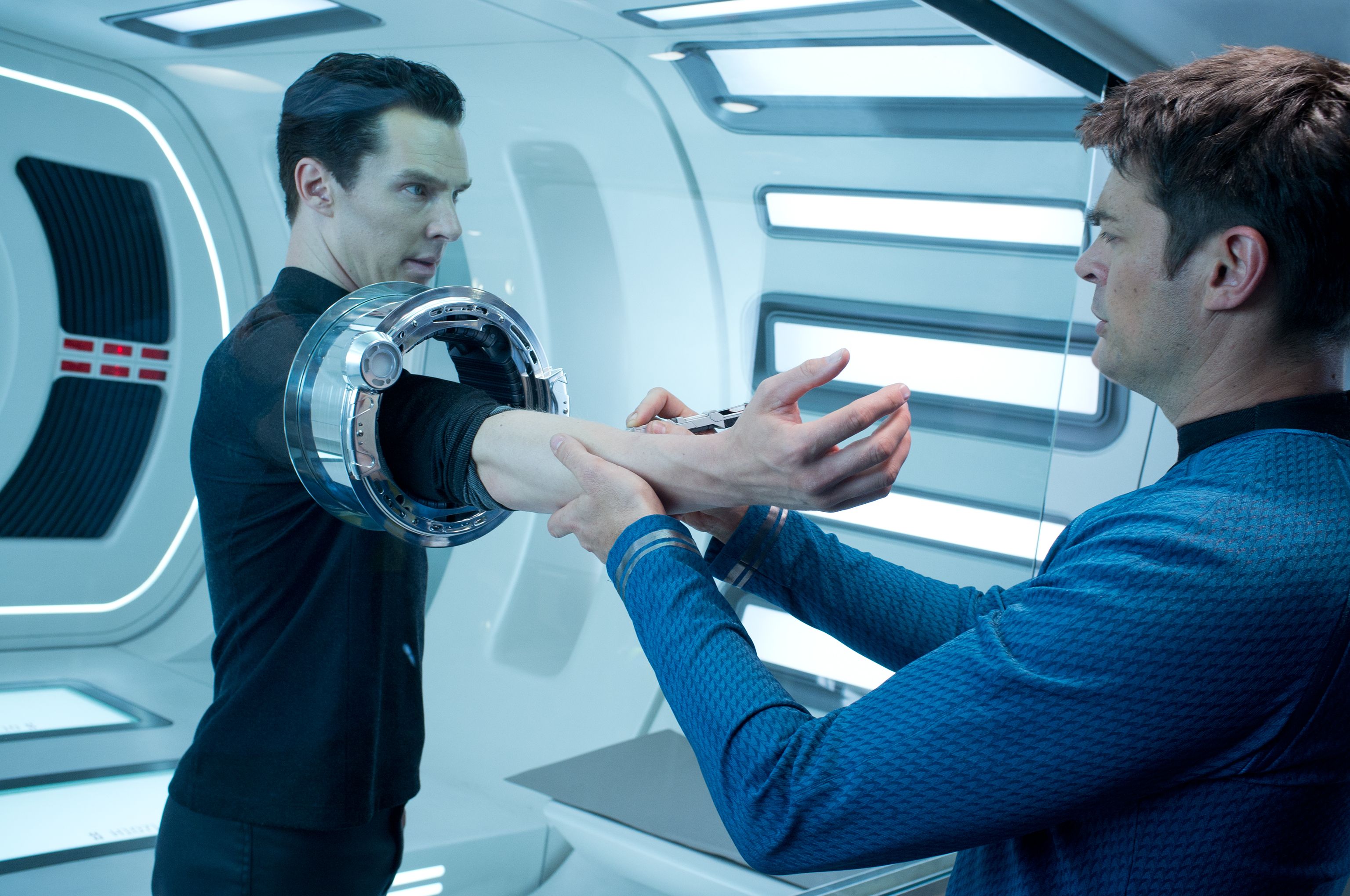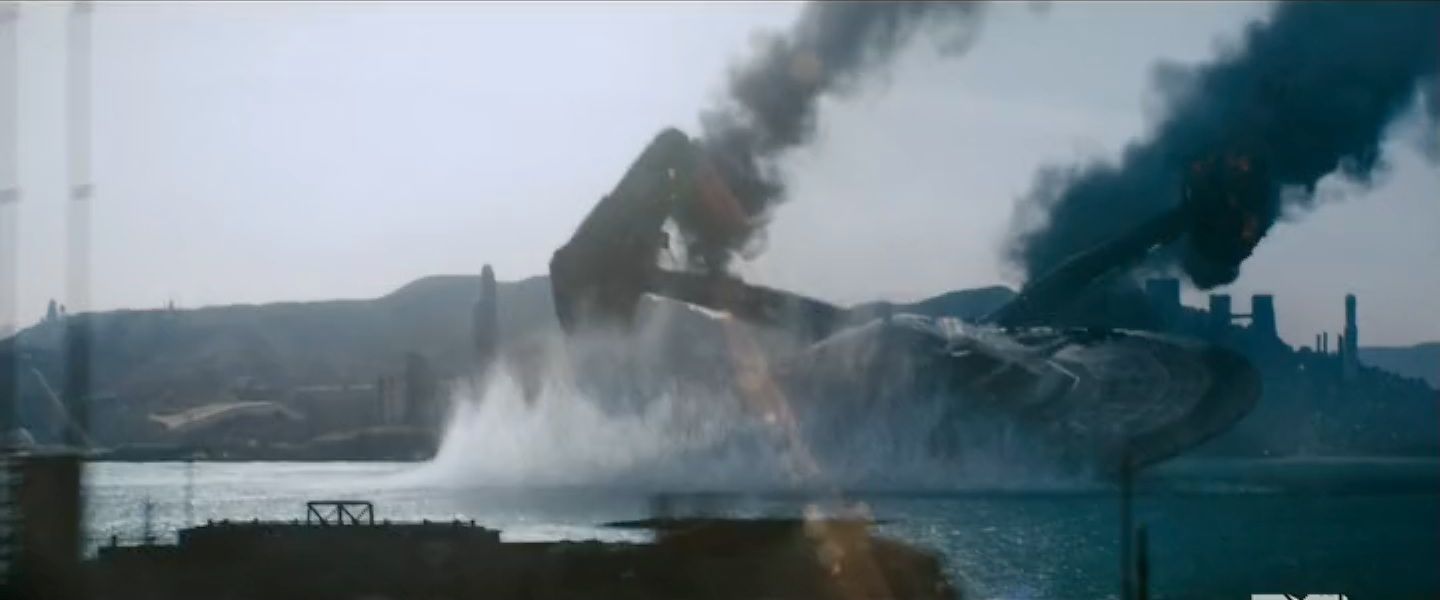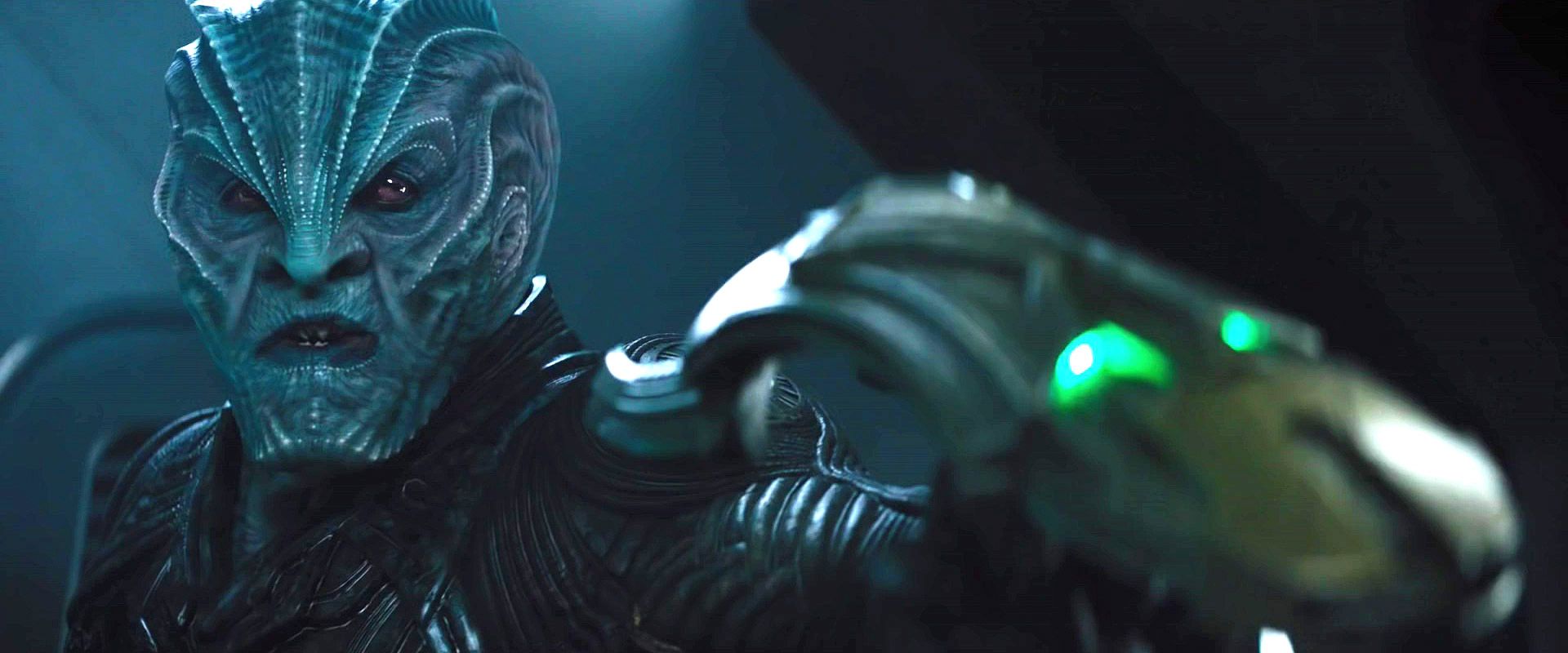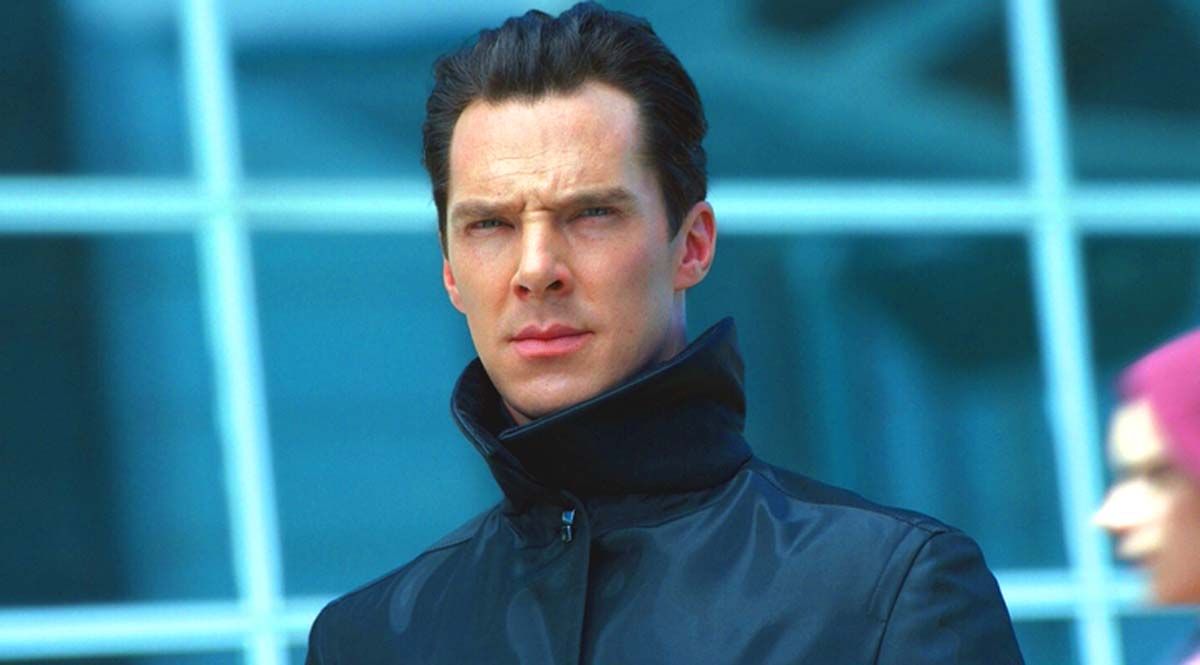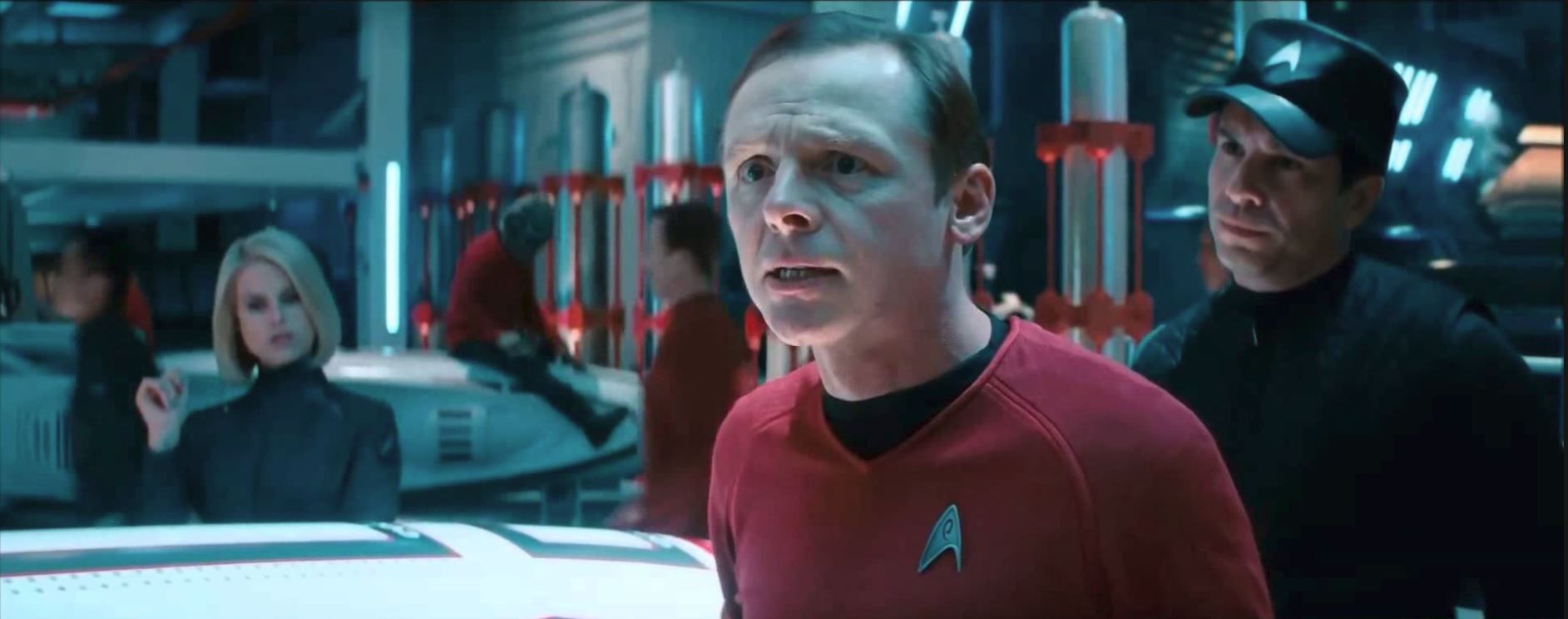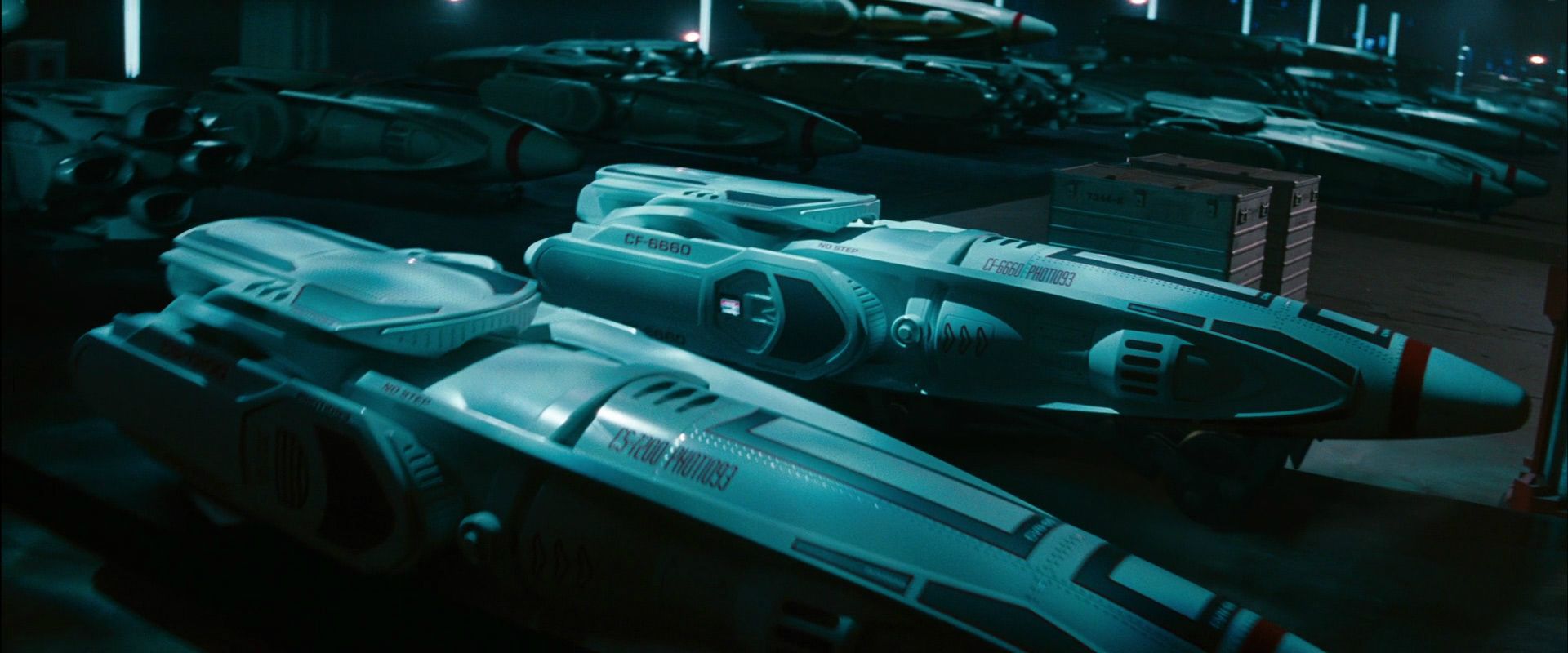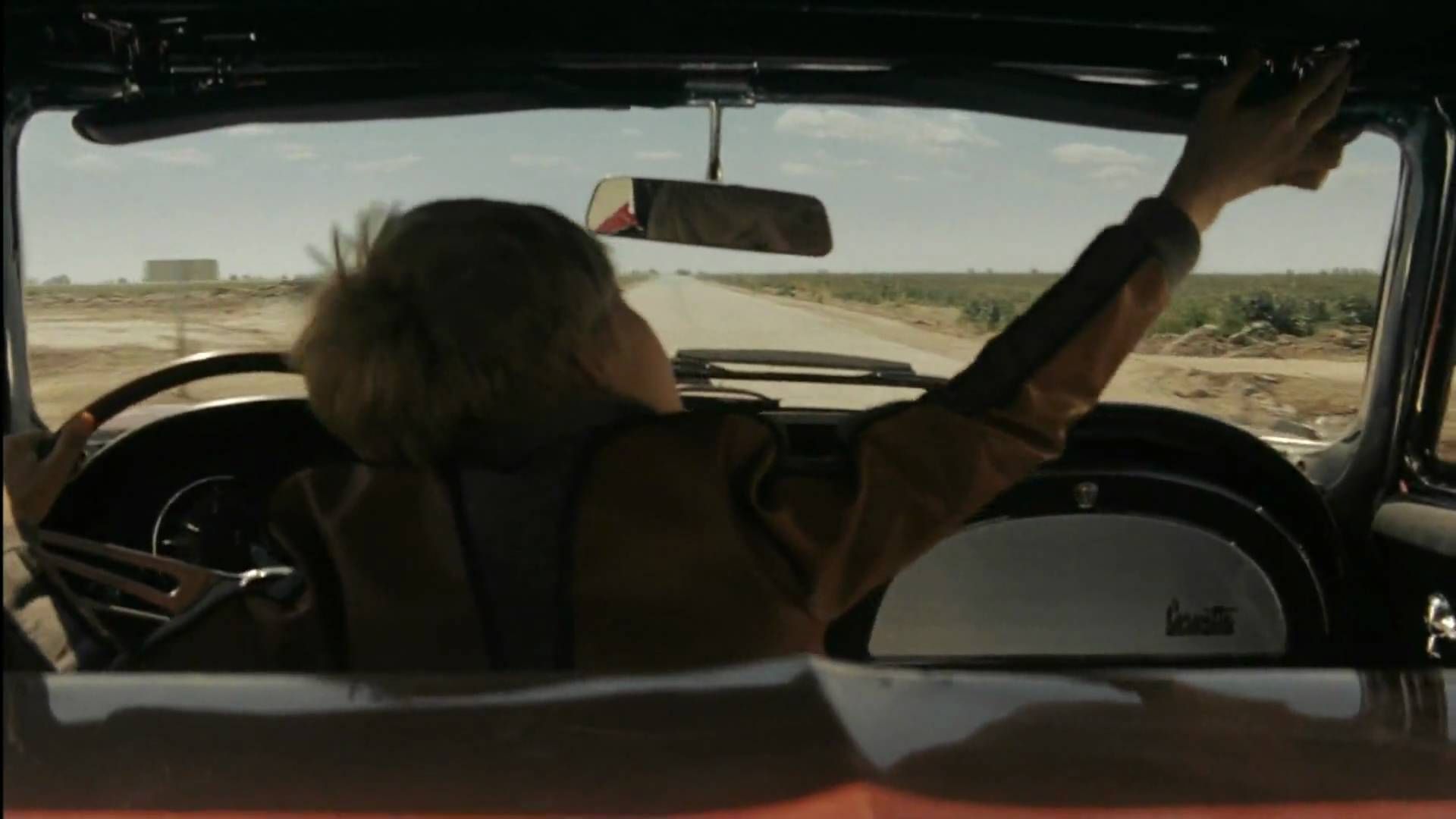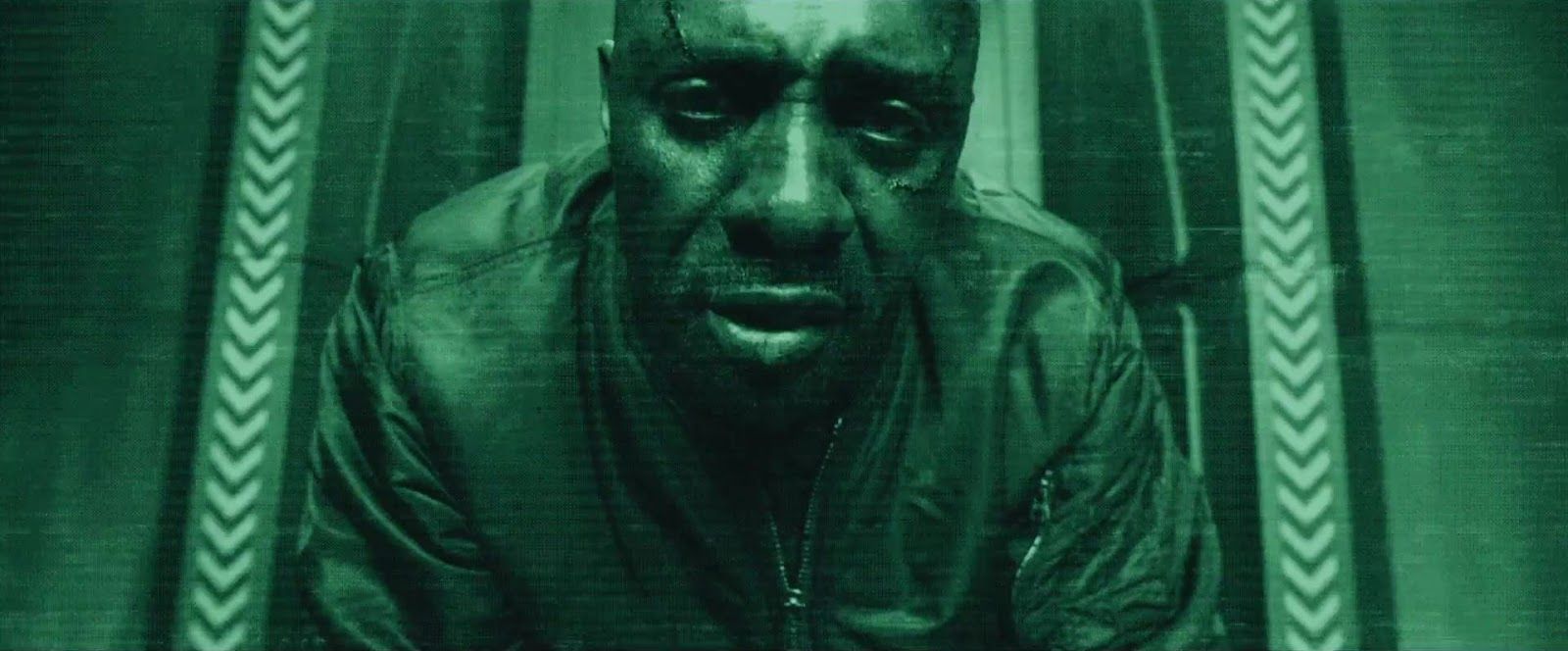To put it mildly, the Star Trek reboot films are very divisive for fans of the franchise. On one hand, the reboots accomplished exactly what they set out to do: they made Star Trek, a series that stereotypically focuses on basic ideas like exploration and peace, seem like an action series instead. Accordingly, this helped bring in a lot of casual viewers that would never previously have called themselves fans of Kirk, Spock, and the rest of the crew.
On the other hand, it’s tough for this to not feel like a bit of a slap in the face to longtime fans of the franchise. Part of what makes Trek so cool is that its ideas endure: whether you’re watching The Original Series, Next Generation, or Voyager, you get the same basic kind of show which is arranged around the same basic, Utopian principles of franchise creator Gene Roddenberry. To put it another way, Trek has never tried to focus on being an action vehicle, so why start now?
We’re not here to settle that particular philosophical debate. However, we have pinpointed some moments from these rebooted movies that make no sense.
Just keep scrolling to read all about 20 Things That Make No Sense About The Star Trek Reboot Movies!
Enterprise Size
One of the big conceits of the rebooted universe is that much of what we know and love is still the same on some level. Kirk now has a tragic past, but he still ends up as a cocky captain following his first, best destiny. Spock is a bit more emo, but he’s still an ultra-logical second in command. Then, there’s the Enterprise itself. To casual fans, it looks pretty recognizable—two nacelles, a saucer section, similar colors, and so on. However, Trek fans with sharp eyes noticed right away that the new design makes no sense at all!
The main issue: it’s just too darn big! According to info from the movie as well as the creators, the new Starship Enterprise of Kirk’s era is about as big as the Enterprise-D was under Captain Picard. This is wrong on so many levels. How and why does Starfleet suddenly have enough time, materials, and crew to regularly fill ships that are so much larger than in the Original Series?
The so-called explanation for this is that Starfleet is making them bigger after encountering Nero’s ship, but then why did the general design stay the same? It’s crazy to still make a ship of exploration because you think you need ships of war!
From Cadet to Captain
Some of the items on this list are only frustrating if you are well-versed in Star Trek lore. That’s a polite way of saying that these things made perfect sense to the casual fans who just came to see Trek as an action movie with comedic elements, and it’s only the hardcore fans who notice and complain. However, some things are so egregiously nonsensical that they left the entire theater scratching their heads. And one of those things was Kirk’s sudden promotion.
Part of the new twist that the first Trek reboot film offered was that we saw Kirk and crew back in their academy days - with the exception of the seventeen year-old Chekhov who is inexplicably already an academy graduate, and Spock, who has had years to become the perfect teacher’s pet.
Kirk starts the movie as a civilian, becomes a cadet, and by the end, he is instantly promoted to Captain!
While it’s true that he beat the bad guy and saved the planet, Starfleet apparently decided that Kirk not only could skip the rest of his academy years, but he could skip the decade or more it would have taken to rise up through the ranks. Can you imagine the hard-working commander who lost a promotion so they could instantly promote a cadet above them?
Why Didn't Spock Approach Starfleet?
Once the great Leonard Nimoy was cast in the rebooted film, it was downright inevitable that we would see older Spock interacting with the younger versions of his former colleagues. While those interactions ranged from sweet (as with Kirk) to funny (as with Scotty), pretty much everything about how he meets them is insane.
First, there’s the idea that Nero found a habitable planet close enough to Vulcan that Spock could see his planet destroyed. Then there’s the idea that Kirk would be marooned on that planet by young Spock instead of just sent to the brig. Finally, though, there’s the actions of old Spock himself.
He acts as though he planned to spend his entire life in an ice cave until encountering young Kirk puts him back in the game.
Specifically, Spock takes them both to the Starfleet base that Scotty is on, which forces us to ask: why didn’t Spock go there on his own when he had the chance? You might think he just wants to preserve the timeline, but he wastes no time telling Kirk and Scotty about their future lives. Would it have troubled him to go to the base as soon as he found it and warn Starfleet about Nero?
Why build Enterprise in Iowa?
There are many accusations that fans have made against the Trek reboot films in general and J.J. Abrams in particular. One of the accusations is that these movies often focus more on style than substance. While that may not always be true, there is one scene that really stands out: when Kirk takes his motorcycle out and sees the Enterprise being built in Iowa.
The scene is majestic and breathtaking as it shows off the beauty of the Enterprise. It’s also completely and totally wrong!
One thing that has been consistent about Star Trek over the course of many years is that starships are built in space. There are many practical reasons for doing this: it makes it easier to assemble, both in terms of small shuttles being able to maneuver around the entire ship and those same shuttles being able to carry materials through the weightless vacuum of space instead of the gravity of Earth or another planet.
As we mentioned before, the Enterprise is absolutely huge— it’s tough to imagine that lifting off would not completely devastate the area, even if they limited themselves to simple maneuvering thrusters! This scene exemplified the issues with reboots pretty perfectly.
Why Is No One Surprised to See Romulans?
One way that the Trek reboots tried to shake things up was by giving us a Romulan bad guy in the form of Nero. While the Romulans made for memorable antagonists in The Original Series, they never played a huge role in the movies based on the original series, and they certainly were not the main antagonists of any of those early films with Kirk and crew. Due to the time-traveling shenanigans of the reboot, we get to see Kirk, Spock, and the others encounter a Romulan for the first time; an encounter that makes no sense.
Back in The Original Series, it was actually a big deal when the Enterprise first saw what a Romulan looked like. Despite Earth fighting a war with the planet, no one had ever seen a Romulan, and so the crew was shocked to see that Romulans looked exactly like Vulcans. However, no one in the Trek reboot comments on this at all.
You might think there is a loophole here (because Nero looks like the later Romulans, complete with some weird forehead ridging), but he still clearly declares himself as a Romulan, and neither the crew of the Kelvin or the crew of the Enterprise are surprised to see what a Romulan for what seems to be the first time.
Why is Spock so Much More Emotional?
The idea that Vulcans experience no emotions is something of a misconception, both in the world of Star Trek and in our own world. Vulcans can feel everything that humans feel, but they have made a cultural choice to suppress those emotions and operate purely in the name of logic. Careful viewers of The Original Series know that even Spock wasn’t always consistent with this: he has been known to smile, exclaim in joy, and occasionally crack some wicked jokes. But the emotions of the rebooted Spock basically make no sense.
In the spirit of giving us younger, more eager versions of all of the familiar Original Series characters, we get a Mr. Spock who is downright erratic.
He smarts off to the Vulcan Science Council, openly grieves over the loss of his mother, and practically chokes Kirk out when he gets angry.
On one hand, there are some huge mitigating factors: Spock is witness to the destruction of his world and the passing of his mother. However, the Spock we know would never act like this - something the movie drives home by showing how older Spock keeps his emotions in check even after the destruction of Vulcan. Basically, young Spock is just constantly angry in that first reboot, and there’s never a good explanation.
Nero's Motivations Make No Sense
On the admittedly generous scale of big screen Trek villains, Nero is actually pretty cool: he has a commanding presence, a scary ship, and he’s driven by a bloodthirsty agenda. Actor Eric Bana sells that bloodthirsty agenda so well that it’s easy to get caught up in his performance. It’s only after the credits start rolling that you’ll find yourself questioning several of the foundational aspects of his plot. Unfortunately, you’ll be left with one inescapable conclusion: Nero’s entire motivation makes no sense!
Basically, he blames Spock for the supernova that destroys his own homeworld of Romulus. We’re going to set aside the dubious science of a supernova that travels the galaxy and focus instead on his motivations. Spock is sent on a mission to stop that supernova and save the Romulans, but he is unable to save them in time and gets sent to the past, same as Nero. This means that Nero blames Spock for something that is not at all his fault (it’s a natural phenomenon), even as Spock was doing his best to help out.
Finally, Spock already pays for his failure by getting marooned in the past. The idea that he needs to suffer more for his good intentions is pretty much crazy talk!
Where are the Time Cops?
The entire notion of “rebooting” Star Trek rests on the idea of the altered timeline. The Romulan Nero (and later, the older Spock) come to the past and disrupt things, creating a timeline that may have familiar characters (like Kirk) but whose events are not necessarily tied in to the Trek world that we know.
While this may work on the narrative level of wanting to create a new sandbox for these movies, there is a pretty big aspect of Star Trek that they are deliberately overlooking.
There are multiple individuals and institutions within Star Trek that monitor the timeline and are able and willing to fix it when things are askew.
Perhaps the most blatant example of this is the Department of Temporal Investigations. In Deep Space Nine, after Sisko and crew are accidentally transported to Kirk’s time, Sisko is visited by these temporal agents upon his return. While the episode doesn’t make it explicit, we think it’s fair that such agents would have a way of protecting themselves from major changes to the timeline— otherwise, one small change erases them from history and prevents them from doing their job. However, no one seems to notice, care, or try to fix the massive changes caused by this “rebooted” universe!
Transwarp Beaming
A plot element from the first Trek reboot that divided fans concerned older Spock and the Prime Directive. Previously, Spock was a staunch defender of the directive and the overall idea that you shouldn’t interfere with the way things are supposed to develop. In this movie, he seems to shrug and determine that because the timeline has already been altered, he can say or do anything he wants to. For instance, he tells Scotty the formula for “transwarp beaming” that older Scotty would later develop. Our question: why do we never see this technology again?
Just to clarify, transwarp beaming is amazingly powerful. Kirk and Scotty are able to beam out from a remote outpost near Vulcan and onto the Enterprise, even while the ship is traveling towards Earth at warp speed. This already seems like a universe-breaking technology (why do you even need ships if you can beam from one sector to another?), but it’s never seen again.
In shows like Star Trek: The Next Generation, it’s very clear that people cannot beam onto a ship at warp unless they match the exact speed, and even then it’s tricky. While this is an altered timeline, older Spock insists that older Scotty developed this technology in the original timeline. So why is it never used?
Why Hide The Enterprise Under Water?
Earlier, we discussed the idea that these Trek reboots have an issue with style over substance. This is very clear in the opening of Star Trek Into Darkness, in which we see Kirk and crew trying to protect a primitive alien species from being wiped out by a volcano. Kirk later gets in hot water because he violates the Prime Directive twice on this mission. First, the very act of stopping a natural phenomenon (a volcano) is forbidden. Second, to save Spock, he flies by and beams him out, giving the aliens a clear look at an advanced starship.
We can debate the ethics behind Starfleet’s Prime Directive another day because we have a more fundamental question: why did Kirk hide the Enterprise underwater on this planet?
Scotty warns him of all the reasons why this is a bad idea, and the only good thing about it seems to be that it keeps the primitive aliens from seeing the ship.
However, they are so primitive that they do not seem to have any electronic surveillance equipment of any kind. Kirk could have simply kept the Enterprise in space and the natives would not ever see it. This would have been logical (as Spock might say) but wouldn't have given the movie its precious shot the Enterprise rising from the water.
Why Didn't Khan Free His People?
The whole presence of Khan in Star Trek Into Darkness is pretty weird. He looks nothing like Khan, though this is given an explanation by saying he had plastic surgery. He sounds nothing like Khan, which was never really explained at all. Finally, his whole plot— where he was discovered and thawed out by Admiral Marcus to help develop weapons for Section 31— is really vague. However, we can overlook most of this nonsense, but we’re still left with a question: why did Khan not free his people when he had the chance?
If you remember, part of the tortured plot is that Admiral Marcus has Khan’s crew frozen and captive, and he threatens to destroy them in order to make Khan compliant. At some point, Khan hides all of their frozen bodies inside some torpedoes, and those torpedoes play a major part of the plot in the aborted attack on the Klingons and the eventual attack on Khan himself.
However, if Khan had the time and resources to secretly hide his entire crew inside torpedoes, then why would he do that instead of simply waking them up? They are all super strong and smart as well; why refuse an army when he has a chance?
The War With the Klingons
As we said earlier, part of the dubious plot of Star Trek Into Darkness is that Khan has hidden the frozen bodies of his crew inside some torpedoes. At some point, Admiral Marcus discovers this, and he decides to get rid of them by ordering an angry Captain Kirk to fire all of the torpedoes at the Klingon homeworld. While this makes sense on the most basic level (it’s one way to get rid of the bodies, at least), everything else surrounding this plot is kind of crazy.
Had Kirk fired those torpedoes, everyone seems pretty certain that the result would be war with the Klingon Empire. Now, Marcus is presented as a bit of a warmonger, so you might think he’d be happy to be at a state of war with someone else. However, he later justifies building the USS Vengeance (that giant ship Enterprise tangles with) because he thinks the Federation is not yet ready for war with the Klingons.
Admiral Marcus is lying about at least one of his motivations or he’s just plain crazy.
Why start a war with the Klingons when you know you’re not ready for war with the Klingons? And all to get red of some frozen bodies?
Immortality Lost
Star Trek Into Darkness rightfully gets a lot of flak for being a Wrath of Khan ripoff. Seemingly anticipating that criticism, director J.J. Abrams tries to do a “clever” reversal of the big sacrifice scene from the earlier movie, and it’s Kirk that gives his life to save the ship instead of Spock. However, we don’t need an entirely new movie that focuses on resurrecting Kirk. Dr. McCoy finds out that, for some reason, Khan’s blood is able to bring people back to life, so they are eventually able to bring Kirk back to the land of the living.
The basic idea that Kirk passes on and is then resurrected is not that shocking; no one expected the main star of the franchise to stay gone that long. However, the idea that Khan’s blood can just magically resurrect people is another one of those developments that theoretically breaks the entire universe of Trek.
Theoretically, Starfleet should be able to synthesize Khan's blood and then ensure that everyone can live forever.
At the very least, they could ensure that no more redshirts have to bite it on hostile alien planets. Instead of changing all of Trek, though, this plot development is quickly forgotten by the next movie.
Mass Casualties
Somewhere along the way, moviegoers started getting disaster fatigue. That is, seeing endless amounts of destruction on screen is not very fun because we can’t help but think about the lives that are at stake. For instance, Man of Steel got a lot of criticism because the fight between Superman and Zod resulted in skyscrapers being knocked down right and left, and viewers were horrified to think about how many lives were lost without our heroes caring. However, Star Trek didn’t get that memo, which is why we get a finale in Into Darkness that basically makes no sense.
As we talked about earlier, the new Enterprise design is huge— it rivals the Enterprise-D that Captain Picard commands. The USS Vengeance dwarfs the new Enterprise with a size that would make it at least a mile long. We mention this because near the end of the movie, the Vengeance crashes to the Earth, and the action quickly shifts to Spock’s need to catch Khan.
While it’s weird enough that this scene doubles down on “emotional Spock” by having him filled with rage, it’s just plain awkward that the falling Vengeance seems to level entire cities and cost countless lives and no one acknowledges it!
Krall's Not-So-Super Weapon
Star Trek Into Darkness got a lot of criticism for recycling Khan as a bad guy. That’s why Star Trek Beyond got back to basics, giving us an old-fashioned bad guy (Krall) who has a pretty old-fashioned plan: he wants to develop a superweapon. Once he has the weapon, his target is the nearby Yorktown, a kind of giant city in space. That’s when we find out the nature of the big, bad weapon we’ve been dreading for the entire movie: it’s a bioweapon know as the Abronath that is capable of wiping out all life on the planet, forcing Kirk and crew into a race to save everyone on the Yorktown, including Sulu’s family.
Here’s the thing: the bioweapon is nice and scary, and it makes for a good existential threat for Kirk to stop. At the same time, though, it’s exceedingly basic. The movie goes to great lengths to sell us on how special this device is, showing how it cannot be activated without uniting two parts. These two parts were hidden to keep this device from ever being used.
However, it’s pretty easy to wipe out life on a planet. In later series, we see how photon torpedoes can be modified to launch special bioweapons into planets and instantly destroy everyone on the surface. Krall would have been better off just finding his crashed ship and modifying the weapons on it!
Khan So White
Most of this list has focused on what doesn’t make sense about the Trek reboots as movies. However, sometimes the things that are pretty crazy aren’t limited to what we see onscreen. Instead, they permeate the making of the film as well as how it’s marketed. Our personal favorite example of this is the completely bizarre way that Benedict Cumberbatch’s character was marketed on the entire press tour of Star Trek Into Darkness.
The fact that Cumberbatch plays Khan was meant to be a surprise twist for viewers, and that’s exactly how they played it in the movie itself. That was already pretty silly-- since this is their first meeting in the rebooted universe, Kirk has no prior knowledge of or relationship with Khan! On top of that, Trek fans guessed that Cumberbatch was playing Khan right away. However, the press tour kept insisting that he was a completely new character named John Harrison.
Making a centerpiece of your marketing a big lie to fans is already pretty strange, but there are also some racial politics here.
Khan was originally playing an Indian warrior and was portrayed by a Hispanic actor. To recreate this, they cast Cumberbatch, who is gifted, but is literally the whitest man to ever walk the Earth!
From Scotty to Sneaky
Star Trek Into Darkness tried to show us a new side of Kirk by turning him into a man with a grudge. Khan’s attack on Starfleet leads to the passing of Kirk’s friend and mentor, Christopher Pike, and this is supposed to be why Kirk is initially so gung-ho to stop Khan at any cost. When Scotty begins to question their very sketchy mission, Kirk relieves him of duty - a decision that actually pays off when Scotty is able to sneak aboard the USS Vengeance to give Kirk info. To this, we can only say: what the heck?
The Vengeance wasn’t just any cool Starfleet ship. Instead, it was supposed to be the most advanced prototype they had ever created it. It wasn’t just backed by Starfleet: we find out that Admiral Marcus is part of the secretive Section 31, and they have the authority to protect the Federation by any means necessary.
Put simply, the Veangeance should have some of the tightest security in all of the galaxy.
Nonetheless, a bumbling Scotty is able to not only sneak aboard the ship but stay there for quite some time. Sure, it makes for a convenient plot turn when he comes back later, but it makes Marcus and Section 31 look like rank amateurs!
The Blood Mystery
As we said before, one of the more questionable Trek reboot features is the idea of a super emotional Mr. Spock. Sometimes, this emotion is sadness, as when he is haunted by the sudden loss of his mother. More often, though, it’s anger: we see him willing to physically fight Kirk in the first movie, and in the sequel, he is filled with wrath against Khan. This even turns into a plot point, as Dr. McCoy worries Spock will dispose of Khan when they need Khan’s blood to revive Kirk. Our question: why did they actually need just his blood?
We don’t get any indication that Khan received any special genetic engineering that the others of his group did not. This means that theoretically, any one of them should have also had magic blood that was capable of reviving those who had passed away.
At this point in the movie, the Enterprise now has the frozen bodies of Khan’s entire crew. It would have been far easier and far safer to get the blood they needed from one of those bodies instead of engaging in a high speed chase of Khan. Once again, these movies put a cool action scene ahead of a sensible plot!
Beastie Boys Paradox
For better or for worse, the Beastie Boys are an established part of the rebooted Trek universe. We hear a young Kirk listen to them in his stolen car in the first movie, and in Star Trek Beyond, he discovers a way to blast their music really loudly and destroy Krall’s attacking fleet. When Dr. McCoy hears the music they are blasting, he comments on it being “classical music.” While it’s a pretty funny line and delivery, it also creates a really big problem for the Trek mythology.
This band has a song from 1998, “Intergalactic”, that makes a very specific reference to Star Trek.
The lyrics include the line “Your knees'll start shakin' and your fingers pop / Like a pinch on the neck of Mr. Spock.” This means that somehow, in the late 20th century, this band was aware of the existence of an alien character from the 23rd century. It would have been easy to pretend the band just didn’t exist in this universe, but now that the reboots made it official, we’re left with a big plot quandary. Unless we assume that Spock travels to the 1990s and somehow reveals his true identity, then this makes no sense at all!
Krall's Accent
Star Trek Beyond tried to throw its own plot twist regarding the big villain of the movie. While this plot twist wasn’t as easy to see coming as the Khan reveal of Into Darkness, it was equally over the top. We eventually find out that the “alien” Krall that Kirk encounters is actually a human being. He was a captain of a starship that crashed on the planet, and exposure to the planet was a double-edged sword. It helped him live unnaturally long (especially when he gets the chance to suck the life force from people), but it also makes him look like a weird alien.
So far, so good: it makes about as much sense as Trek ever does. One thing that is never explained, though, is Krall’s accent. We see from old Starfleet logs that he spoke with a normal English accent, sounding just like, well, Idris Elba! However, Krall speaks with an accent so thick that it borders on the unintelligible. Seriously: streamers basically keep the subtitles on just for this guy!
While we can believe that the planet made him look freaky because we get a technobabble explanation, no reason is given for the weird “alien” accent. It seems like it’s jut another bizarre plot point to obscure an equally bizarre twist!
---
What else doesn't add up about the Star Trek reboot films? Let us know in the comments!

